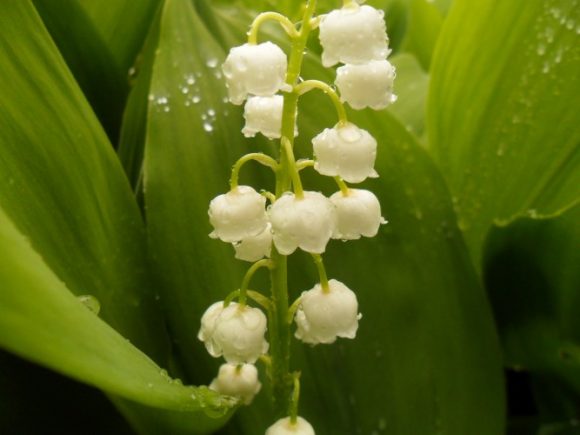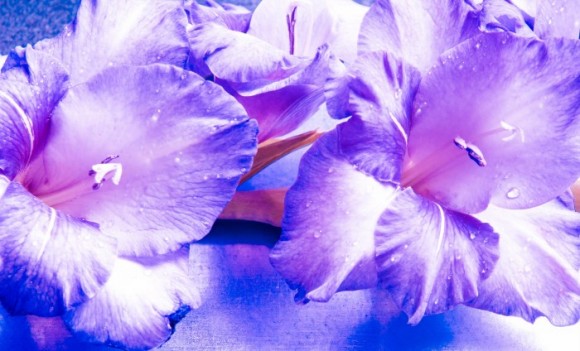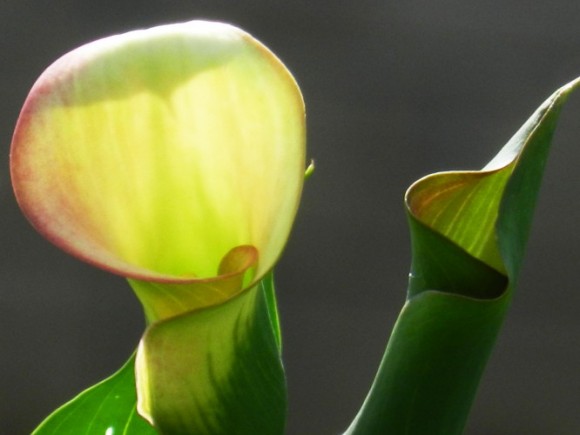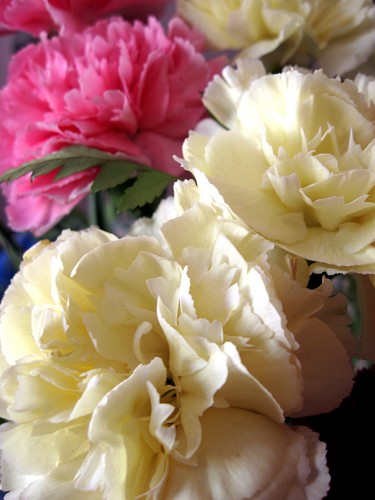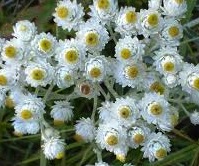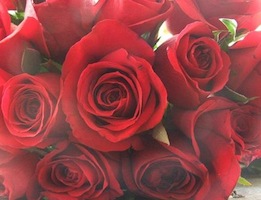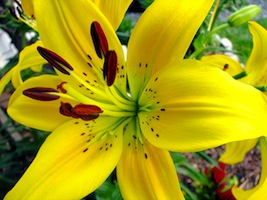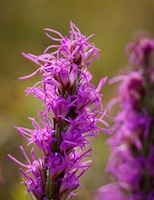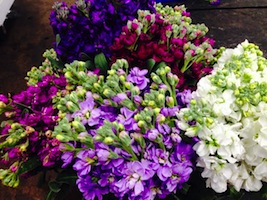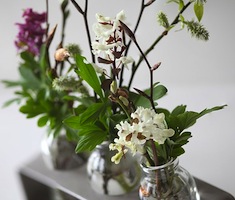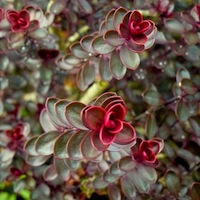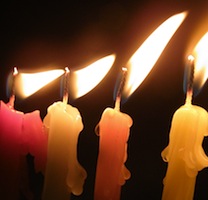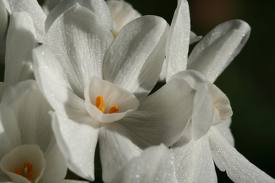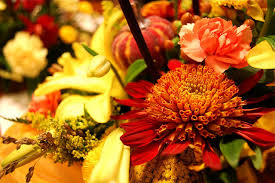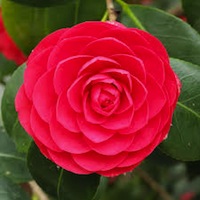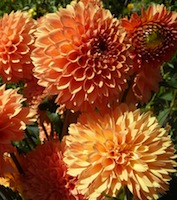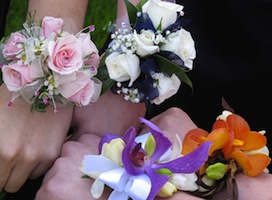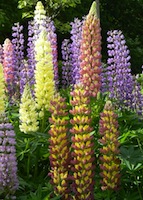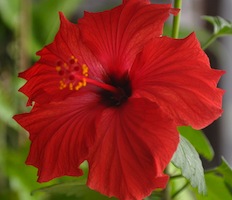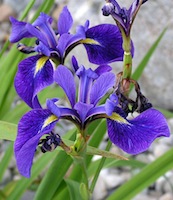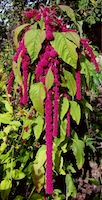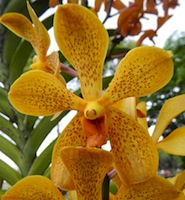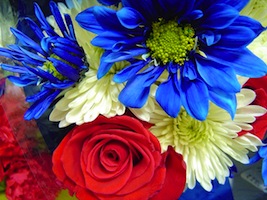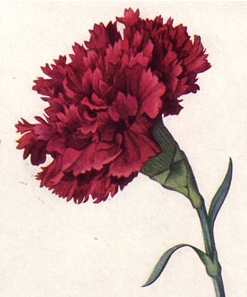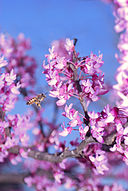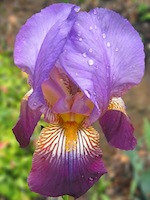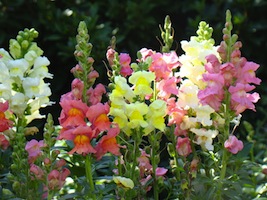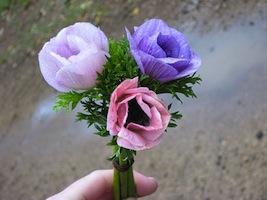Search Results for “”
Lily of the Valley is the Right Flower for Special May Occasions
Lilies of the valley are the traditional flower for the month of May. This tradition began in the 1560s when King Charles IX of France was given a stem of lily of the valley as a May Day gift. The flower has since been said to bring good luck. Continue reading [...]
A Guide to Birth Flowers
The start of a new year is a perfect time to familiarize yourself with birth flowers. To help you choose blossoms and bouquets to give this month and every month until we say Happy New Year again, discover the perfect symbols for celebrating a loved one’s birth month by referring to this guide. Continue reading [...]
5 Great Flowers for November
All flowers are beautiful and appropriate for giving anytime. But, certain flowers are standouts for November. They offer a look that's perfect for fall and a sense of warmth to convey just the right message during the holiday season. Continue reading [...]
Reasons to Give Flowers During June
Any time is a good time to give flowers. But, if you’re looking for a specific reason to gift them during June, we have some ideas for you. For all of the occasions listed below, you can pick up whatever kind of blooms appeal to you (and you think will appeal to your recipient) at your local farmers market. You can also cut some from your garden, or order them online and have them shipped to someone special. It doesn’t matter what type of flowers you give or where you buy them, as long as you’re gifting from your heart. Continue reading [...]
California Flowers that are in Season this June
What’s in season in California this June? Many, many beautiful flowers that you can give to someone special or display in your home. Continue reading [...]
Celebrate the Lily This May!
We have about two weeks left of May, which means there are about 14 days remaining to celebrate May flowers. Of course, we love flowers and think that any variety is perfect for enjoying anytime. But, it’s often fun to give flowers – and to keep them in our homes – during a certain month that are associated with that month. Continue reading [...]
Flowers that Bloom During Late Spring
Have you checked out our lists of flowers that you can expect to bloom during early and mid-spring? We’re celebrating beautiful blooms that pop up during the season, and we have one more batch of these gorgeous blossoms to share with you. Continue reading [...]
Flowers that Bloom During Mid-Spring
We recently wrote about flowers that you can expect to bloom at the beginning of spring. Today, we’ll give you a heads up on mid-spring blooming blossoms, so that you can plan for a garden or know what’s going to be available to make magnificent floral bouquets with a couple of months (or, tell your florist you want these flowers in your spring bouquet). Continue reading [...]
Springtime Flowers for an Early Spring Bloom
Wondering which beautiful flowers you have to look forward to for springtime arrival? There are many! We love spring and we anticipate the freshness that comes with the season. After a long, but beloved, winter filled with poinsettias and pines, spring delivers bright and cheery blooms that burst with pastel colors and pretty shapes.
If you’re looking for floral abundance to fill your house with during spring, or to gift to someone, the following are some springtime blossoms you should look for: Continue reading [...]
Bring Home a Yellow Rose for Texas Independence Day
Leave it to a state as big as Texas to have two independence days.
Each year, along with shooting off fireworks on July 4th, the Lone Star State also sets aside March 2nd to honor the day back in 1836 when the state declared its independence from Mexico, sparking the Texas Revolution which ended in its annexation to the United States. What better flower to celebrate this historical holiday than one that appears in a song about a key battle for Texan independence- the yellow rose. Continue reading [...]
4 Charming Floral Imports from China to Celebrate the New Year
Today is the official start of the Year of the Sheep!
With one of the oldest human cultures in the world, the Chinese New Year tradition is the most important of the year and is celebrated by millions of people around the globe. Based on a lunar calendar and lasting for 15 days, many people travel home to be with family, eat special food and attend celebrations with fireworks, performances and friends. If you want to start the Year of the Sheep off on the right foot, consider decorating your home or bringing a gift of one of these important flowers that were first cultivated in ancient China. Continue reading [...]
Pet-Friendly Houseplants for “Love Your Pet” Day
After all the hearts and flowers of Valentine's Day have passed, February 20th offers the opportunity to celebrate the relationship you may have with a furry, four-legged friend on national "Love Your Pet" day. This odd holiday makes purr-fect sense to those of you who count animals among your favorite company and should be celebrated with some tasty treats and a good scratch behind the ears. If, along with being an animal lover, you also have a penchant for green plants, keep in mind that some houseplants may not mix well with cats or dogs. Take a look at the list below before heading to the florist or garden center to make sure your pets and potted plants live in harmony.
Continue reading [...]
A Brief (Bloody) History of Valentine’s Day
While many may be tempted to call Valentine's Day a Hallmark holiday, the origins of this day set aside for lovers has a history that dates far back into antiquity. While February 14th is set aside nowadays for flowers, candy and cards with little hearts drawn on them, the first celebrants of this holiday used the bloody hides of sacrificed goats and dogs to flog their paramour. Sounds sexy, right? Continue reading [...]
Ranunculus, not Roses, for a February Birthday or Anniversary
With Valentine's Day putting flower prices at a premium, there's a good chance that those of us born in February may have never received a single stem for a birthday. For those of you with anniversaries this month, there's a darn good chance any bloom brought home will be a red rose, since it's hard not to walk into any florist or grocery store not decked out in Valentine this month. With the lightening speed of life these days, it makes sense to double up on holidays and special occasions, but taking the time to recognize someone's special day in the midst of the month where everyone is buying flowers and balloons can make it even more special. If you want to honor a birthday or anniversary in February, ranunculus are the perfect pick. Continue reading [...]
Celebrate Singlehood this Valentine’s Day with Sweetheart Roses
Valentine's Day conjures up all sorts of emotions in the life of a single person. From dredging up memories of crepe paper shoeboxes in the classroom to reflections on the last relationship gone wrong, it's hard to look forward to a holiday hell-bent on canned sentiment and the rather public pronouncement of your status as single. While reflecting on what is wrong with a holiday dedicated to lovers can leave one bitter, it's also an opportunity to celebrate what is so right about singledom. The best flowers to do this with are sweetheart roses. Small but mighty, these sprays of gorgeous rosebuds will help you count your blessings for being with the one person who knows you best and loves you for who you truly are- you. Continue reading [...]
4 Leading Flowers for Hollywood Award Season
The nominations are out and in a few short weeks the red carpet will roll.
Whether you've seen them all or are just hoping to get some good movie recommendations, the Golden Globes and Academy Awards are a Hollywood tradition and a great reason to throw a party. If you plan on hosting or attending an Oscar party this year (or just plan on enjoying the show in the comfort of your own living room), here are 4 absolutely fabulous flowers that will bring the golden age of Hollywood glam into focus. Continue reading [...]
Get it Right this Groundhog’s Day with Gayfeather
You've seen the movie.
Bill Murray, a misanthropic big city news reporter, travels to a quaint town to report on the groundhog's predictions for spring. He finds himself waking again and again to the same day and, after nearly succumbing to the monotony of this predicament, he instead realizes his opportunity to make this one day as wonderful as possible. This Groundhog's Day, why not put your own efforts into creating a day as special as possible. Fresh flowers are the perfect way to add a little beauty and appreciation into any day and a great choice for this February 2nd is gayfeather. Known by the Latin name, Liatris, or sometimes called blazing star, gayfeather flowers are the perfect symbol of a perfect day. Continue reading [...]
5 Flowers for Fat Tuesday
Every February, Mardi Gras gives us a chance to kick convention to the curb and fatten up with a day of drinking and debauchery before settling in to the Lenten season of austerity and repentance. Around the world, versions of this crazy carnival are happening in the streets with dancing, parades and elaborate costumes. Traditional colors of purple, gold and green decorate the streets and perhaps a King Cake on your kitchen table. Whether you celebrate this Fat Tuesday before Ash Wednesday for Continue reading [...]
6 Flowers for When you Can’t Stand Another Second of Winter
If the thought of having to scrape ice off another windshield while the hair in your nostrils slowly freezes makes you want to push the snooze button until spring, it's time for a little flower therapy. Winter can be tough. The days are dark and you might not see the sun between punching the clock in the morning and making your way precariously home through icy streets. It's hard to remember that this too shall melt and your frozen toes will one day walk barefoot on soft, spring grass. When you can't stand one more day of sub-zero weather, try one of these hothouse flowers that will melt your heart (even if they can't do much for your heating bill). Continue reading [...]
Celebrate Civil Rights with Statice
The third Monday in January is the day Americans honor the efforts of Martin Luther King, Jr. More than a celebration of the man and his life, this day is set aside to remember the stalwart strength and dedication to the cause of justice that all those who fought (and continue to fight) for equality and human rights around the world. This January, celebrate civil rights with a flower that represents the valor and bravery needed to stand tall in a time of challenge and controversy- statice. Understated, but amazingly long-lived, this flower is the perfect pick for holiday that it more than just a day off work. It's a day to continue the work, started long ago, towards a more free and just society. Continue reading [...]
3 Fantastic Foliage Options for Winter Flowers
Hothouse flowers grown in greenhouses around the world have made roses available in winter and tulips possible in fall, but the best part of fresh flowers can sometimes be bringing a bit of the season inside. For this reason, choosing flowers that are in season not only ensure they are at their freshest and most economical, but that they match the mood of the months as they go by. Like pages on a calender flipping by, the leaves around us grow, change colors and flutter to the ground each year. Choosing greens that reflect the season outside are a detail that is sometimes overlooked in flower arrangements, but can add so much to the decor when properly chosen and placed. Spring sprigs and lush summer leaves are easy to find, but choosing winter greens are not as much of a challenge as you may think. Here are three fabulous foliage choices for the coldest months of the year. Continue reading [...]
Eight Crazy Nights of Flowers for the Festival of Lights
Bust out the dreidels and latkes- it's Hanukkah time!
Celebrating the successful rededication of the Holy Temple in Jerusalem and the long-lasting one-day's supply of oil that burned for eight, count 'em, eight crazy nights, Hanukkah is known as the Festival of Lights, as each evening a candle is lit on the menorah and left to burn all night. Gathering with family and friends is the kosher thing to do during this winter-time holiday, and a small gift of flowers will look lovely as you sing Hanerot Halalu. Here are eight fabulous flowers that will light up the night. Try bringing home one each evening for a bouquet of blessings worth their weight in gelt.
Continue reading [...]
Norfolk Island Pine- a Real Christmas Tree that Will Last For Years to Come
Few things get you in the holiday spirit faster than the soft needles and piney fragrance of a fresh cut Christmas tree decorated with lights and ornaments. What's not to enjoy about the star-topped glory of a tree ringed with presents waiting for Christmas morning- other than the fantastic mess it will make as you haul the brittle, dried-out boughs out the door a few weeks later. For this reason, many folks have move to artificial trees, missing out on the spirit of the fresh tree standing bright inside on these cold, winter nights. A perfect compromise is the Norfolk Island Pine. This soft-needled evergreen is a wonderful and easy to grow houseplant that looks gorgeous growing inside all year long, but will look just as lovely all lit up with lights and tinsel during the holiday season. The best part of all- you can have a fresh tree to trim every December without every having to toss it out in January. Continue reading [...]
Alternatives to Poinsettias
Not to be a Scrooge, but the typical potted poinsettia plant is a little over done. Each December, literally millions of these traditional Christmas time blooms are sold around the country and have become not only the staple flower of the holidays, but they account for almost one quarter of all flowering potted plant sales in the US. Ironically, the red iconic blooms of the poinsettia are not actually flowers, but highly pigmented leaves. The real flower are the tiny yellow ones at the center of the red bracts that now also come in white, pink, marbled, speckled and curled. Even with all the new and different varieties to choose from, it can sometimes be a bit repetitive to buy the same plant year after year. If you are looking for something a little different this holiday season, you have several lovely choices that are lovely and festive- and not poinsettias- to choose from. Continue reading [...]
Tropical Flowers to take the Chill Off a Winter’s Night
There are times in life when you simply must close your eyes and think of your happy place.
Does yours involve warm sand, lapping waves and exotic fruit cocktails? Perhaps tanned people wearing few clothes walk by under swaying palm trees as somewhere, far off, the sound of sea birds and the faint strumming of a ukelele? A real beach vacation may not be in your stars this month, but a vivid imagination and a few stems of tropical flowers will certainly help take the chill out of winter and make a "happy place" out of where ever you are. If you or someone you love is in desperate need for a little R & R to somewhere sunny and warm, consider bringing the beach to them with these exotic flowers found only in lush lands where the palm trees sway. Continue reading [...]
Thanksgiving Centerpieces that are Sure to Please
Thanksgiving.
The day we give thanks for all the good people and good fortune we have in our lives- and then stuff our faces. No matter what your favorite dish is you look forward to seeing around that table each year, the fresh flowers and greens from a lovely Thanksgiving centerpiece will be a delight that everyone will enjoy throughout the long day of eating and for days to come. All sorts of different styles and arrangements can be made to order at your local florist and if you're heading over to someone's house for the big meal you can pick one up ready made for the perfect hostess gift. Whether you choose a simple round arrangement or a cornucopia of flowers, a centerpiece will add freshness and flair to the occasion and most come with candles that can be lit to make the meal more elegant and festive. Below are several different styles to choose from, along with tips for making them last longer than the leftovers. Continue reading [...]
Holiday Cactus Will Bloom through the Season
Eating season is here!
Cold weather has come to visit and soon, too, will friends, family and full days dedicated to nothing but cooking and eating. Along with lots of tasty recipes circling around on Pinterest and lots of hungry people around the table, add some fresh blooms that will brighten the room from Turkey Day until the new year with a holiday cactus. Called everything from Thanksgiving cactus to crab cactus, the succulent Schlumbergera truncata and several of its related species are fantastic plants for your own home or that of a hostess during the winter season. Just starting to bloom in late November, these easy to grow houseplants are festive, fun and readily available at your local florists. Continue reading [...]
Heartwarming White Cyclamen for Winter’s Coldest Days
Winter came whalloping in this week for many parts of the country, covering fall-blooming flowers with snow and bringing down the temperatures to record-breaking lows. While the winter weather seemed a long time coming this year, with it comes the need to bring the outside in with a fresh bouquet or potted plant to remind us through the short, cold days and chilly nights that spring will come again. Consider the white cyclamen for a frigid day like today. Said to represent warmth in the Victorian language of flowers, its gracefully drooping white blooms and silver-streaked leaves will warm your heart and help you not mind being cooped up in the house on these chilly winter days. Continue reading [...]
Alternatives to Paper Poppies for Veteran’s Day
The tradition of wearing a poppy on one's lapel to honor veterans of war dates back to just after World War I. A Canadian physician, Lieutenant colonel John McCrae, had penned a poem after presiding over the funeral of a friend who had been killed in the Battle of Ypres, where over 120,000 casualties were estimated. The new graves of the many young men who had died stretched on through a field of bright red poppies, and his poem, in Flanders Fields, used the flowers as a metaphor for the spilled blood of war. Published back in London in 1915, the poem quickly became the most popularly recited verse of its era and the red poppy the symbol for the great sacrifices of the armed forces. In 1919, exactly one year after the war ended, November 11th was designated as Remembrance Day (in Commonwealth countries) by King George V and Veteran's Day in the United States, to honor members of the armed forces- particularly those that gave their lives in defense of their country. The red poppy was worn in recognition of the holiday, but since November is not the typical season for this summer flower, most are made out of paper. If you'd like to honor the service of veterans, past and present, with a fresh flower instead of paper, consider the following blooms that make excellent boutonniere's to pin to the lapel on this day of remembrance. Continue reading [...]
Decorate for Day of the Dead with Marigolds
Tracing back to the ancient Aztecs, the celebration of Dia de Muertos falls on November 1st and 2nd each year as a day to remember and honor the departed loved ones in your life. A national holiday in Mexico, but celebrated around the world, the Day of the Dead is a time to decorate small alters, clean and beautify grave sites and to gather with friends and family to reminisce and tell stories about those who have died. Favorite food and beverages, treasured belongings, freshly baked bread and candied sugar skulls are all a part of the fiesta, but one of the most important decorations are the marigold flowers. Said to be the favored flower of the dead, the Mexican marigold (Tagetes erecta), sometimes called cempasuchil or Flor de Muerto, is an essential part of the traditional celebration. Continue reading [...]
Pagan Plants for All Hallow’s Eve
The origin of Halloween is shrouded in myth and mystery. Said by some to have started after the christening of the Basilica in Rome by Pope Gregory III who established All Saints Day on November 1st, the night was supposedly set aside for prayer and fasting to prepare to honor the saints who did not have a designated day. Suspiciously, one can't help but wonder then how this lead to the traditions of roaming the night in scary costumes, visiting house to house and celebrating the night by smashing intricately carved gourds. There is much more evidence to support the pagan birth of this ritualized eve of disguise and debauchery. In its efforts to transform the non-christian, end of summer harvest festival, traditionally called Samhain in Gaelic speaking parts of Europe, the church gave the holiday a polish and a new name. Halloween, however, remains a night for spirits and spooks, parties and pagan ritual. From the hollowed-out gourds to some of the old English plants below, this night remains one in which worldly creatures might wander into the other-worldliness of the spirit realm. Celebrate with some of these pagan plants that have held spiritual significance to those that wandered before us. Continue reading [...]
Dahlias for Diwali
This annual festival of lights falls on October 22nd this year, which is the 15th day of the month of Kartika in the Hindu calendar. One of the most important holidays of the year for Hindus, Diwali is celebrated to honor Rama, an incarnation of the god Vishnu, and to symbolize the triumph of victory over evil. Along with oil lamps and hanging lanterns to light the home, consider a dazzling display of dahlias to decorate the table or bring with you as a gift as you visit friends and family. Said to symbolize dignity in the language of flowers, colorful dahlias are the perfect flower for celebrating Diwali and are at their peak this time of year. Continue reading [...]
Celebreate the Senses on White Cane Safety Day
Celebrated worldwide on October 15th of every year, White Cane Safety Day is a time to recognize and honor the achievements of people who are blind or visually impaired and to appreciate the tools available to help them navigate the world. First established in 1964 with the help of the National Federation of the Blind and approved by Congress, this holiday was set aside as a time for people and organizations to celebrate the independent travel the white cane allows while also bringing national attention to issues around safety and accessibility. Some events include hosting a dinner in the pitch dark or organizing a walk in the community to raise funds for training seeing eye dogs or research. While flowers are visually pleasing to those of us with the gift of sight, they are no less lovely to enjoy with our other senses. Below are several flowers that can touched, smelled or otherwise appreciated more than just in the eye of the beholder. Continue reading [...]
Celebrate Mental Health Day with Flowers that Make you Feel Fabulous
There's a lot going on in this world that can drive a person crazy, so taking care of mental health should be an important priority in everyone's life. October 10th is recognized worldwide as Mental Health Day and is set aside to celebrate the advances made globally in mental heath education, support and awareness. With several recent studies published that link lowered levels of stress, depression and even pain and healing time to simply looking and smelling flowers and plants around you, picking up a bouquet on the way home might just help keep you sane in this mad, mad world. Not sure which flowers will have the most positive impact on your state of mind? Here are a few you'll just go crazy over. Continue reading [...]
Celebrate Native American Day with these Indigenous Flowers
In many states across the nation, the second Monday in October is somewhat contentious. While many calendars mark it as Columbus Day to celebrate his "discovery" of America, others see it as an opportunity to highlight the rich history and culture of the indigenous peoples of our country. Regardless of what title you give this holiday, it is a time to reflect on the natural riches and scenic wealth of our lovely lands. With thousands of native plants to admire, try out one of these two listed below for a bouquet or arrangement that was truly "made in America." Not only are these native plants lovely to look at, but many also have served other important uses to America's first peoples. Continue reading [...]
Homecoming Flowers for a High School Dance
An American tradition for a century or more, homecoming was first celebrated at universities and colleges to welcome back alumni, but for many high school students it's the first dance they'll attend. Along with parades, football games against rival schools and the crowning of the Homecoming Queen, is also the first time many nervous young men will wait at the door with corsage in hand as their date comes down the stairs. Meet her (or him) with flowers that look fresh and fabulous all night long by choosing some of these spectacular stems that are the perfect choice for a corsage or boutonniere. Continue reading [...]
Forget-me-nots are the flower for National Grandparents Day
Signed into law by President Jimmy Carter in 1978, National Grandparents Day falls on the first Sunday following Labor Day and is set aside to remember and acknowledge the contribution of senior citizens to our country, community and personal lives. Whether you wish to honor your own nana and paw-paw, or have room in your heart and schedule to adopt a grandparent, the official flower for this holiday is the lovey forget-me-not. Pretty in a pot on the porch or windowsill, the forget-me-not can also be made into a corsage or boutonniere for the day, and are a great way to remind someone whose memory is getting a bit rusty that they are important, they matter, and they are loved.
Continue reading [...]
Celebrate Labor Day with Lupine
One does not typically associate labor and toil with a day of festivities, but the invention of Labor Day in America was started as just that way back in 1882. Seen as the swan song of summer and the last long weekend for barbeques and bocci ball, celebrate this national holiday with the lupine flower. At its finest as the dog days simmer down into cooler nights and crisper mornings, this native wildflower works hard to look good in a vase next to the roasted corn and sweet iced tea. Continue reading [...]
Welome Back to School with Begonias
A teacher friend once described the month of August as one long Sunday night, with educators, students and parents all mentally preparing for the start of school. While you are busying packing up the pencils and notebooks for the new year, pick up a begonia as a gift for yourself, a teacher or student, as a reminder that there's always time to stop and smell the roses while this busy time of year begins. While the begonia does not have much of a fragrance, certain types are said to symbolize cleverness and popularity. Named for a 17th century governor, Michael Begon, by the famous French botanist, Charles Plumer, the begonia got a bad rap for having a name that sounded like the word "beware" in Latin. In the Victorian language of flowers that was all the rage at the time, the begonia was sent as a message of warning. With hundreds of different species in three different subgroups, it is unfair to associate all of them with caution and imminent danger. In the 21st century it's time to reclaim this large group of lush flowering plants and have them symbolize the upside of wariness, which includes adventure, opportunity, and the wonderful feeling that something big is about to happen. Continue reading [...]
Celebrate National Book Lovers Day with a Bouquet for your Bookworm
You know that their light will be on late into the night, just finishing that one chapter...that leads to the next...and the next. Book worms are a rare breed and this August 9th, we get to celebrate them with National Book Lover's Day. Whether they enjoy reading Flowers for Algernon or The Perks of Being A Wallflower, a bouquet full of bookish blooms are a great way to join in the celebration. Consider one of these flowers for your next floral and literary foray. Continue reading [...]
Hibiscus to Celebrate Hawaii’s Statehood
On August 21st 1959, President Eisenhower signed a proclamation that added the final 50th star to the old star-spangled banner when he autographed the admission of Hawaii into official statehood. Each year in August (this year it falls on Friday, August 15th) the day is honored a variety of ways with government offices and many businesses closed around the islands so that people can celebrate. Of all the 50 states, Hawaii has some of the best selection of tropical plants and flowers and whether you live on the islands or are landlocked in the Midwest, there's no better way to acknowledge the day than with the gift of a beautiful hibiscus plant. Turn your own patio into a paradise or add a touch of the tropics to a friend's with this exotic bloom.
Continue reading [...]
3 Flowers for a Midsummer Night’s Dream
Shakespeare had a way with words, but some of us need flowers to woo our women.
When the days are long and the nights hang with languid stars in the humid sky, a fresh bouquet of flowers that reflect the moonlight are the perfect way to entrance a lover. Chocolate melts, words may soon be forgotten, but the subtle scent of a summertime bloom will stay in the memory long after the flower fades and dreamer awakens. Choose one of these 3 midsummer flowers for a whimsical night when words alone simply won't do. Continue reading [...]
Roses for Ramadan
Much like the rose, which can be found growing in gardens and on the hillsides of almost every continent, Islam's most holy holiday, Ramadan, is celebrated all around the world this month through fasting, prayers and special events and traditions. Observed on the ninth month of the Islamic calendar, Muslims from many different parts of the planet look forward to breaking their fast each evening with family and friends and spending time contemplating spiritual matters. The end of this holy month is celebrated on Eid, which is a time of festivities and parties. Flowers, not surprisingly, play a role in Ramadan traditions across the world and are used to honor the graves of loved ones and are a welcomed gift at any iftar (the sunset meal) or Eid celebration. Steeped in history and recognized worldwide for its symbolism and myth is the perfect flower for this high holiday- the rose. Continue reading [...]
Celebrate a Summer Birthday with Sizzling Solidago
Growing up, there were certain trade-offs to having a summer birthday. True, you never got to wear the special birthday hat or bring in cupcakes to class like the kids born in February, but you also had a lot of options as to how to spend the long daylight hours of your special day. When it comes to flowers, folks born in the hot, sunny months of summer also have a lot of options. Long days and warm temperatures make summer the prime season for many locally-grown flowers and a great choice for a fancy birthday bouquet or vase of wildflowers is the bright and sunny solidago flower, more commonly known as goldenrod. Continue reading [...]
Light up the Sky with the Perfect 4th of July Flowers- the Torch Lily
Perhaps the most popularly celebrated of all American holidays, the Fourth of July is a day of BBQ's, fireworks and a whole lot of homegrown pride. Freedom and democracy go well with a side of potato salad and nothing sets a picnic table with more class and style than a vase full of tall Kniphofia, called by the glorious common names- torch lily or red hot poker. Consider a tall, glass jar of these as cut flowers or small potted container to plant in your own garden afterwards as the perfect condiment at your Fourth of July grill out. Continue reading [...]
5 Flowers for your Farm Dinner Table
With summer at its zenith, now is the time to dine out of doors around a long table set with vintage tablecloths, friends, and farm-fresh flowers. Along with the chipped, mismatched china and greens from your garden, be sure to set the table with a mix of these flowers that are sure to have your farm dinner guests feeling like kinfolk by the end of the night. Continue reading [...]
6 Summertime Flowers that can Handle the Heat
Some summer days can really sizzle, cooking fresh cut flowers to a handful of wilted greens, but with all the lovely stems available when the weather is warm, summer is a great time to buy flowers. Choosing the right stems for when temperatures flare can be a challenge now that flowers can be flown in from around the world no matter what the season. Whether you are looking for the perfect bloom for a June wedding, a July birthday, or an August anniversary, these 6 stems will look fresh and fabulous on even the most sweltering days of summer. Continue reading [...]
The One Flower Every Woman Should be Given at Least Once in Life- Gardenia
This is not a practical flower; gardenias are hard to find, last only a short while, and leave a lingering scent so full of longing that she may go her whole life seeking it out once again. You do not bring a woman a gardenia flower to be practical. This is the large, white bloom in the hair of Billie Holiday; the one tied to the delicate wrist at a debutante's ball- the flower pinned in the veil of the most memorable day of a woman's life. This is the flower you give to someone whom you hope will remember you always and will do so every time she catches the faint scent of gardenias blooming on a summer night. Continue reading [...]
3 Ways to Say Happy Armed Forces Day
Men and women of the Army, Navy, Marines, Air Force, Coast Guards, National Guards and Reserves serve our country every day; on the third Saturday in May, we have our change to honor them. While these folks in uniform don't expect to be thanked for their commitment to country in times of peace and times of war, flowers are a great way to let them know that you appreciate their dedication to the cause of peace, liberty and the pursuit of happiness. Here are three great plants to help you salute the service men and women in your life. Continue reading [...]
Surprisingly Spectacular Celosia is the Perfect Flower to Honor National Explosive Ordnance Disposal Day
The timer ticks downs while everyone holds their breath. Shaky hands clutch pliers and a bead of sweat rolls down a forehead, furrowed over a tangle of wires. The red one...no, wait, is it actually the blue?!!! In Hollywood, dismantling a ticking bomb is a frequent plot twist that leaves the audience with sweaty palms and a racing heart, but in the U.S. Armed Forces, there are actually thousands of specialist trained to dispose of explosive devices. Honor their former or current service the first week in May with a flower as action-packed as their typical day at work: celosia. Continue reading [...]
Celebrate Cinco de Mayo with Carnations
While traditionally the colorful flowers used to celebrate this Mexican holiday are made of tissue paper, add a special touch with real carnations this May 5th. The bright red, soft pink, glowing yellow, frilly white and (recently) pretty purple petals of this long-lasting and readily available flower will add fun and flair to any fiesta. Cut short and strung up as a garland or arranged in tall vases of hand-painted pottery, these inexpensive blooms are the perfect flower to celebrate Mexican heritage and pride. Continue reading [...]
Perfect Flowers for Passover (in case you forgot to send any)
Even with 8 days to celebrate, it's easy to let Passover pass by without sending flowers to help set the Sedar table, but there is still time this year to pick the perfect centerpiece filled with flowers, plants and foliage typically used to celebrate Pesach. For a holiday that is focused around the table, a long, low arrangement filled with bright blooms, bitter herbs and your heartfelt sentiment is the best way to celebrate a high holiday if you can't make the pilgrimage home. Continue reading [...]
The Best Alternatives to Easter Lilies
Not everyone can handle the pungent perfume of the traditional Easter Lily, but don't swear off springtime flowers for your congregation or annual Easter egg hunt without an opportunity to explore some lovely Easter lily alternatives that many florist have on offer this time of year. While the long, white, pendulous blooms of the Lilium longiflorum may still outnumber any other flowers on hand, they will definitely be outshone by some of these amazing alternatives. Continue reading [...]
Ranunculus are the Right Flowers for a Girl Graduating High School
There are few things more radiant and lovely than youth and the promise it holds, except perhaps, the ranunculus flower. Despite its complicated name (you can call it "Persian Buttercup" in a pinch), this softly-swirled spring bloom is the perfect match for your lovely graduate in the springtime of her life. A bouquet of bright orange, yellow, pink or red ranunculus will look lovely held next to that high school diploma and show up beautifully in photos. Afterwards, she can admire them in a vase on her dresser for days to come as she contemplates what promise and adventure the summer and autumn of life will bring. Continue reading [...]
Celebrate Siblings with Snapdragons
The month of April is rich with random, made-up holidays: April Fool's Day, Take-Your-Daughter-to-Work Day, National Juggler's Day, Hair Appreciation Day, Pigs in a Blanket Day (no joke) and now, drumroll please...... National Siblings Day. Few flowers make a finer choice than the sensationally colorful snapdragon for celebrating this somewhat dubious day set aside to honor the folks who share about 75% of your DNA and a whole lot of inside jokes. The colorful petals of these crazy-shaped blooms will brighten the day of your brother or sister and remind them how lucky they are to have you in the family. Continue reading [...]
Anemones for Administrative Professional’s Day
Secretary, administrative professional, office support staff- whatever their title, this person deserves more than a vase of flowers once a year for putting up with you every day, so make it count with beautiful anemones. These spring-time lovelies are delicate and sweet, but can handle the day-to-day pressure of being a cut flower in a vase full of crazy leaves and will look stunning on that desk, even as it piles up with paperwork. At their prime in April, just in time for Administrative Professional's Day, anemones will light up the office and the faces of your support staff. Continue reading [...]
Lilacs are the Perfect Pick for Mom on Mother’s Day
Chances are, the first flowers you ever picked were for your Mom. Show her you've come a long way since those wilted dandelions with a stunning arrangement of lilacs fresh from your florist. Not only is early May Mother's Day, it's also the prime season for these fragrant stems to be in stock in your florist's cooler or, perhaps, your own backyard. Their sweet scent fills a room like your laughter once did and will remind her that, even though you're all grown up, you still like picking her posies. Continue reading [...]
The Right November Birth Flower, Chrysanthemums
The right November flowers can be flowers in the color of the November birthstone, or you can opt for giving the actual dedicated November birth month flower: the chrysanthemum. Chrysanthemums are perennial flowers in the Asteraceae family, which are native to northeastern Europe and Asia. Continue reading [...]
The Right November Fall Birthday Flowers
The right November birthday flowers are a fun and beautiful way to honor the special day of that November baby! November flowers and plants bring some of the most gorgeous colors that the earth has to offer - bright oranges, muted peaches, vibrant reds, deep burgundies, harvest yellows, and pretty plums. Here are some of our favorite November birthday flowers! Continue reading [...]
December Flowers
Different flowers symbolize different wishes; this article about the meaning of flowers for December describes what message you'll be sending when you give this birth month flower to someone (the delightful narcissus is the birth month flower for December; the alternative is the holly.) Continue reading [...]
November Flowers
Different flowers symbolize different wishes; this article about the meaning of flowers for November describes what message you'll be sending when you give this birth month flower to someone who has a birthday or other event in November (the charming chrysanthemum is the birth month flower for November.) Continue reading [...]
October Flowers
Different type of flowers symbolize different wishes; this article about the meaning of flowers for the month of October describes what message you'll be sending when you give October's birth month flowers to someone who has a birthday or other event in October (the calendula is the birth month flower for October; the alternative is cosmos flowers.) Continue reading [...]
September Flowers
This flower guide for the month of September gives you the meaning of flowers (the aster or as an alternative, the morning glory, are the birth month flowers for September.) Send flowers of either type, and this flower guide explains the message you'll be sending along with your bouquet or arrangement. Continue reading [...]
August Flowers
This flower guide for the month of August gives you the meaning of flowers (gladiolas or as an alternative, poppies are the birth month flowers for August.) Send flowers of either type, and this flower guide explains the message you'll be sending along with your bouquet or arrangement. Continue reading [...]
July Flowers
This flower guide for the month of July gives you the meaning of flowers (larkspur flowers are the birth month flowers for July. An alternative July birthday flower is the water lily). Read on to discover what message you're sending when you include these flowers in a bouquet for some who has a birthday in July. Continue reading [...]
June Flowers
This flower guide for the month of June gives you the meaning of flowers (the rose is the birth month flower for June. An alternative June birthday flower is the honeysuckle). Read on to discover what message you're sending when you include these flowers in a bouquet for some who has a birthday this month. Continue reading [...]
May Flowers
This flower guide for the month of May gives you the meaning of flowers (the lily of the valley, is the birth month flower for May. An alternative May birthday flower is the hawthorn). Read on to discover what message you're sending when you include these flowers in a bouquet for some who has a birthday this month. Continue reading [...]
April Flowers
This flower guide for the month of April gives you the meaning of flowers (the daisy and the sweet pea are the birth month flowers for April), so that if you send a bouquet of flowers to someone who's birthday is in April, you can be sure of the message you're sending with them. Continue reading [...]
March Flowers
This flower guide for the month of March gives you the meaning of flowers (the graceful daffodil is the birth month flower for March), so that if you send a bouquet of flowers to someone who's birthday is in March, you can be sure of the message you're sending with them. Continue reading [...]
January Flowers
This flower guide for the month of January gives you the meaning of flowers (carnation and snowdrop for January), so that if you send flowers you can be sure of the message you're sending with them. Continue reading [...]
February Flowers
This flower guide for the month of February gives you the meaning of flowers (violet and primrose for February), so that if you send flowers you can be sure of the message you're sending with them. Continue reading [...]
